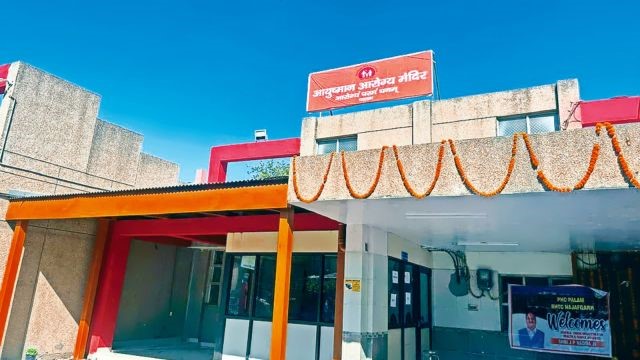Ayushman Arogya Mandirs

- 11 Mar 2025
In News:
The Government of India has operationalisedAyushman Arogya Mandirs (AAMs) across the country, marking a transformative step towards holistic, accessible, and preventive health care. As of January 31, 2025, a total of 1,76,141 Ayushman Arogya Mandirs have been established nationwide.
Recent Development in Delhi:
Recently three Primary Health Centres (PHCs) in Najafgarh, Palam, and Ujwa were converted into Ayushman Arogya Mandirs. These are among the first AAMs in Delhi, focused on:
- Preventive and promotive healthcare, beyond clinical and immunisation services.
- Free access to 172 medicines and 63 diagnostic tests.
- Dissemination of health awareness via health talks and educational displays (e.g., ear health, lifestyle diseases).
- Community outreach through ASHA and ANM workers under IEC and BCC programmes.
These centres operate under the Rural Health Training Centre, Najafgarh, affiliated with the Union Ministry of Health and Family Welfare. The Najafgarh PHC, one of Delhi’s oldest (established in 1937), is undergoing certification under National Quality Assurance Standards (NQAS) and Indian Public Health Standards (IPHS).
Key Features of Ayushman Arogya Mandirs:
- Comprehensive Primary Health Care (CPHC): Includes preventive, promotive, curative, rehabilitative, and palliative services.
- Staff trained in yoga, lifestyle counselling, diabetes and blood pressure screening.
- Universal, free healthcare services located closer to communities.
Institutional Framework:
Ayushman Arogya Mandir is a rebranded initiative under the broader Ayushman Bharat scheme, launched as per the National Health Policy 2017 to achieve Universal Health Coverage (UHC).
It consists of two major components:
- Ayushman Arogya Mandirs – Delivering comprehensive primary healthcare services.
- Pradhan Mantri Jan Arogya Yojana (PM-JAY) – Providing health insurance coverage of ?5 lakh per family/year for secondary and tertiary hospitalization to over 12 crore poor and vulnerable families (covering approximately 55 crore individuals).
